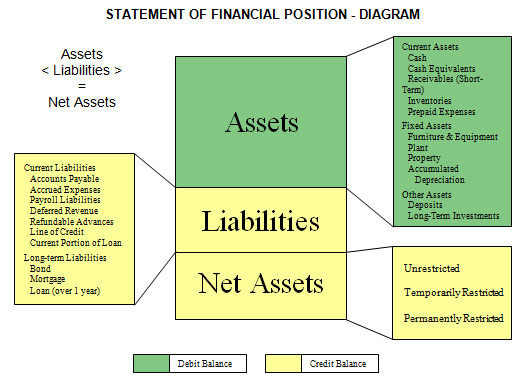Basic Project Finance Basics
Post on: 8 Август, 2015 No Comment

The Basics of Project Finance
What is Project Financing (or Project Finance)?
The term project finance is generally used to refer to a nonrecourse or limited recourse financing structure in which debt, equity, and credit enhancement are combined for the construction and operation, or the refinancing, of a particular facility in a capital-intensive industry, in which lenders base credit appraisals on the projected revenues from the operation of the facility, rather than the general assets or the credit of the sponsor of the facility, and rely on the assets of the facility, including any revenue-producing contracts and other cash flow generated by the facility, as collateral for the debt.
How is Project Finance Used?
Whether termed international project finance, global project finance or transnational project finance, the financing technique of bringing together development, construction, operation, financing and investment capabilities from throughout the world to develop a project in a particular country is very successful. The technique is being used throughout the world, in emerging and industrialized societies.
Examples of Facilities Developed with Project Finance
[1] Energy Generation. Project finance is used repeatedly as a financing technique for construction of new energy infrastructure. It is used in industrialized countries, such as the United States, in emerging countries, such as in Eastern Europe, the Pacific Rim or in countries with tremendous new infrastructure demands, such as in Latin America.
In emerging countries, project finance presents an alternative to the traditional, non-market-based development of electricity resources. Traditionally, in these countries, electrical resources were owned by vertically integrated public monopolies that generated, transmitted and distributed electrical power, financed by the utility or official borrowing, and subsidized by the local government or cross-subsidized by various customer groups (industrial versus residential, for example). Project finance permits the traditional structure to move from these monopolies to private generation of electricity. The traditional monopoly is being broken down through various models, including privatization of existing assets, encouragement of private development of new electrical production and establishing the government-owned utility as a purchaser of power for transmission and distribution over existing facilities, or a combination of these. Project finance is possible where a firm, credit worthy purchaser of power enters into a long-term contract to purchase the electricity generated by the facility.
Private power projects financed on a project finance basis are developed by a special-purpose company formed for the specific purpose of developing, owing and operating the facility. It has no other assets or previous operations. Lenders rely on the cash flow of the project for debt repayment, and collateralize the loan with all of the project’s assets. A power sales agreement, a type of off-take contract, is the linchpin of the project. This contract creates a long-term obligation by the power purchaser to purchase the energy produced at the project for a set price. To the extent the project is unable to produce sufficient revenues to service the debt, the project’s lenders have recourse to the project assets. No recourse is available to the project sponsors, however.
[2] Pipelines. Storage Facilities and Refineries. Development of new pipelines and refineries are also successful uses of project finance. Large natural gas pipelines and oil refineries have been financed with this model. Before the use of project finance as a financing technique, these facilities were financed either by the internal cash generation of oil companies, or by governments.
[3] Mining. Project finance is also used as a financing technique for development of copper, iron ore, bauxite mining operations in countries as diverse as Chile, Peru and Australia.
[4] Toll Roads. Development of new roads is sometimes financed with the project finance model. The capital-intensive nature of these projects, in a time of intense competition for limited governmental resources, make project finance based on toll revenues particularly attractive.
[5] Waste Disposal. Similarly, project finance is an attractive financing vehicle for household, industrial and hazardous waste disposal facilities. The revenue generated by so-called tipping fees (the term has its genesis in the physical act of a garbage truck tipping its contents at a landfill) can be the revenue flow necessary to support a project financing.
[6] Telecommunications. The information revolution is creating enormous demand for telecommunications infrastructure in developed and developing countries. Project finance provides a financing vehicle that can be used for this infrastructure development.
[7] Other Projects. The use of project financing is limited only by the necessity of a predictable revenue stream and the creativity of financiers and counsel. Other uses include pulp and paper projects, chemical facilities, manufacturing, retirement care facilities, airports and oceangoing vessels.
[8] Uses by Industrial Companies for Growth and Restructuring. In addition, project financing can be used by industrial companies for expansions, new project development, financing joint venture assets, and financial restructuring. Also, industrial companies apply project financing structures in connection with unbundling capital intensive, non-core assets, such as energy production facilities.
Use in Emerging Economies
Until the early 1970s, much of the financing of infrastructure development in emerging countries came from government sources, such as the host country government, multilateral institutions and export financing agencies. More recently, however, constraints on public funding have emerged. These constraints include reductions in developing country financial aid funding. Also, host country governments lack the financial creditworthiness to support financially, through direct funding or credit support, the volume of infrastructure projects required to develop their economies.
At the same time, a global sea change took place in the view of many governments, multilateral institutions and public entities in infrastructure development. In this new world order, more reliance is placed on the private sector, in both developing and industrialized countries, as governments accept that the private sector is often better able to develop, construct and operate large-scale infrastructure projects. A deterioration of financial conditions in developing countries, a move toward privatization of infrastructure in both developing and industrialized countries, increased demand for financial aid from former Soviet-block countries and countries in Central Asia, are combining to make private sector involvement very important.
These changes, coupled with the lack of capital in developing countries, result in a need for foreign investment to satisfy growing infrastructure needs. This need is based on the tenet that infrastructure projects are the cornerstone for economic development. The private sector is emerging as an important financing source for infrastructure development in these countries.

The stability and predictability favored in project financings make structuring project finance transactions difficult and expensive in the developing countries of the world, because of the complexity of risk allocation among multiple parties (including lenders, political risk insurers, multilaterals and bilaterals) and the higher returns required to compensate parties for the risks involved. Investors and project lenders, preferring predictability to uncertainty, must be assured that the economic assumptions underlying a project, including revenues, taxes, repatriation and other economic factors, will not be disrupted by host country action. These countries, of course, are by nature developing economic, labor, legislative, regulatory and political frameworks for growth and prosperity, not yet as settled (or at least as predictable) as the developed world. While project finance risk allocation is important in all countries, it is of particular importance in the developing world.
The business environment in a developing country is different in at least four major respects from the developed world: legislative and regulatory systems; political security; economic security and centralized infrastructure systems.
Legislative and regulatory systems are usually not as defined as in the developed countries. Environmental laws and policies, for example, have not yet been aggressively pursued in developing countries. Also, these countries might not have in place detailed systems for dealing with foreign lenders and foreign equity investors, on such matters as ownership of infrastructure projects, taxation and repatriation of profits.
Political security is another area of uncertainty for project financings in developing countries. Political security typically results in higher costs necessitated by the need for complex insurance programs and higher equity and debt rates. Political risks, include expropriation, civil unrest, war, expatriation of profits, inconvertibility of currency and breach of contractual or other undertakings by the host government.
Economic insecurity arises in a project financing from the inability of the potential project user to support the project through use or purchases, either in demand or in ability to pay. Infrastructure projects might provide a needed service, but at a price that cannot be afforded by the great majority of the population. Even if delivered, collections practices may be poor.
Either because of political theory, a lack of private capital, multilateral investments or nationalization programs, most infrastructure is owned by the government in developing countries. This public-sector ownership structure eliminates the effects of competition and increases the likelihood of inefficiencies.
Consequently, developers of proposed infrastructure projects must consider the effect of this public-sector structure on the proposed private-sector project. Possible effects include whether the private project will compete with the existing public-sector projects, which are arguably more likely to reduce charges for output or use in exchange for short-term political gains; whether there will be a privatization of all government- owned infrastructure projects, and the effect of that on the private-sector project; and ongoing rigidity inherent in working with government bureaucrats responsible for existing facilities.
Each of these four differences (legislative and regulatory systems; political security; economic security; and centralized infrastructure systems) results in a risk portfolio for the private-sector project that potentially includes higher construction and operating costs (such as inflation, unavailability of efficient foreign exchange markets, no long- term currency swap market, delays, cost overruns); great demand for project output or use; inability of population to afford the project output or to use the project (prices are low; collections are poor; transferability of profits is difficult; there is a mismatch of host government revenues from local customers with foreign debt; questionable safety of investment from nationalization). Therefore, nonrecourse and limited recourse project financings are considered extremely difficult to accomplish in the developing world, and require intensive attention to risk mitigation.
The easiest solution is to use government guarantees covering payment, convertibility, and other risks. However, this approach is neither a long-term solution nor in favor with host governments and multilateral institutions. There is a financial limit to the amount of contingent guarantees that a government can and should enter into. Other alternatives can be explored.
The project-based financing is emerging as a hybrid financing technique that mixes project finance and corporate finance techniques. While project sponsors desire to achieve many of the goals of nonrecourse project financings, the risk involved in developing countries often requires that some sort of recourse to the project sponsors be in place. Consequently, rather than full recourse corporate finance, project-based financing in developing countries probably will require project sponsors to accept some form of limited-recourse obligations. The extent of recourse will vary project-by-project and country- by country.














